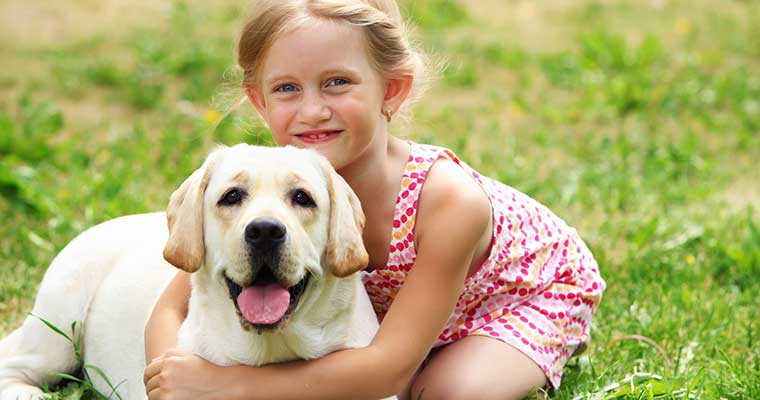The loss of a pet is a devastating event for the whole family. Whether by old age, illness, or by accident, the loss is typically extremely hard on children. Often times it is the first encounter with death a child sees and it can be hard for them to wrap their head around the concept; and all of the emotions that come along with it. The loss may also be one of the prominent memories and events in their childhood, and as such, it is crucial to allow a child to grieve and mourn in a safe environment.

Think Before You Act
Don’t allow yourself to downplay the loss. Telling a child that it’s just a part of life, or that it was bound to happen eventually, does more harm than good in many situations. Even though you may have good intentions, in a child’s eye they have just lost a friend and family member, and if you downplay the loss, you are downplaying their feelings. By doing this, you also are opening up a space for them to wonder if they need to worry about other family members dying as well. Make sure to tell your children that you aren’t going anywhere anytime soon.Also make sure to let your children know that the death is nobody’s fault. Sometimes children blame themselves or other family members for the death and this can be very problematic.Offer your child a safe and open environment to discuss fears and thoughts. A listening ear will go a long way; let your child know that you are available for them to talk to about the loss. As you talk to your child about their pet, make sure you are honest as well. Lying about what happened, will only end with more tears. Being honest and transparent about the loss will end up benefiting you in the long run.

The Grieving Process
Allow the child to feel their emotions. Let them be sad, hurt, or angry. Tell them it is okay to feel these emotions, and that it is perfectly normal. You can also allow them to creatively express their emotions, through drawing or writing. Encourage them to talk to friends who may have gone through a similar experience.You may also want to allow your child to see you grieve to an extent as well. Children look up to adults, and look to them to see how to react to situations. If you are hysterical, a child will be hysterical. On the opposite end of the spectrum, if you show no response, a child will feel as though it’s inappropriate for them to be sad about the loss, resulting in built up feelings and emotions in the child.
Catharsis
For some families, a funeral or memorial service may be appropriate as well. A memorial service can allow family members to discuss their fondest memories, and allows everyone to remember the happy times. Funerals can assist in the healing process, and might be a great place to start the grieving process for your family.

Getting Back to Normal
Make sure not to let your child sulk, or be depressed for too long. Encourage your child to still go out and play, and stay active in the activities they enjoy. After some time has passed, if you are considering buying a new pet, make sure that the whole family has properly had time to grieve the loss of the previous animal. Always be sensitive to the thoughts and feelings of the children, and discuss the option of getting a new pet with your child before doing it.The loss of a pet is never a fun experience, but if you take steps to ensure you are creating a safe, loving space for a child to grieve, the process can go a little smoother. What are some of the ways you have helped a child deal with the loss? Tell us in the comments below.
